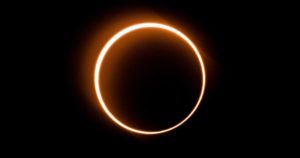This afternoon I took part in my weekly group meditation which has been so beneficial during lockdown, and afterwards someone mentioned that today’s session felt especially powerful. We all felt it. The instructor commented that it was likely because of the particular energy of today’s summer solstice, adding that this year’s solstice is special due to the coinciding eclipse. With the time warp we have been living in, I hadn’t noticed the date, but after her comments I wanted to know why this solstice is unusual. I thought I would share what I found out. I also discovered that I really didn’t know much about the summer solstice at all!
A solstice happens when the Earth is at a maximum tilt towards the sun, the day with the longest period of daylight and when the sun reaches its highest position in the sky. In New York, that means today there are 15 hours, 5 mins and 37 seconds between sunrise and sunset. It’s a turning point in the calendar because after the summer solstice, days begin to get gradually shorter. Many people use midsummer to describe the day on which the solstice happens, but since solstice is supposed to be the start of summer, how can it also be midsummer? This is because the word midsummer is Old English and comes from Anglo-Saxon times when there were only two seasons on the calendar: summer and winter. But even today it could be argued that it makes more sense to see the solstice as the middle of summer rather than the start, as the days gradually get shorter afterwards. Celebrations of the solstice have been held since ancient times and became known as Midsummer’s Eve and Midsummer’s Day. Just like many other pagan celebrations, they later became combined with a Christian festival taking place around the same time – in this case, St John’s Eve a few days later which commemorates the birth of St John the Baptist.
What is different this year is that there will be an annular solar eclipse on Sunday, June 21, the day after the solstice. These only happen at a time of a new moon and when the moon is at the most distant point of its orbit so, when looked at from Earth, it is not quite big enough to cover the entire surface of the sun. The new moon leaves a stunning aura of sunlight still showing around the edge as a so-called ‘ring of fire’. Unfortunately, the phenomenon won’t be visible from the USA and although there will also be eclipses at the solstices of 2039 and 2058, the two events won’t coincide again exactly for almost 200 years until 2242. That is why, visible or not, many people believe that the event this years is exceptionally powerful, marking a positive shift of energy.

Whether we believe in the spiritual aspect of the solstice or not, a positive, powerful shift in energy is definitely something I know I need as we begin to emerge from the strangest period of most of our lives. At the end of our meditation session, the teacher read a poem, which included the words used as a closing prayer at the end of kundalini yoga sessions. The beautiful sentiment of this chant are not only perfect for a time of solstice, but as a useful mantra as we start to move on from this bleak period into a brighter one. Here is a lovely sung version which I sometimes play during reflexology sessions, just listening to it fills me with hope and makes me look forward to hearing it again with you soon.
